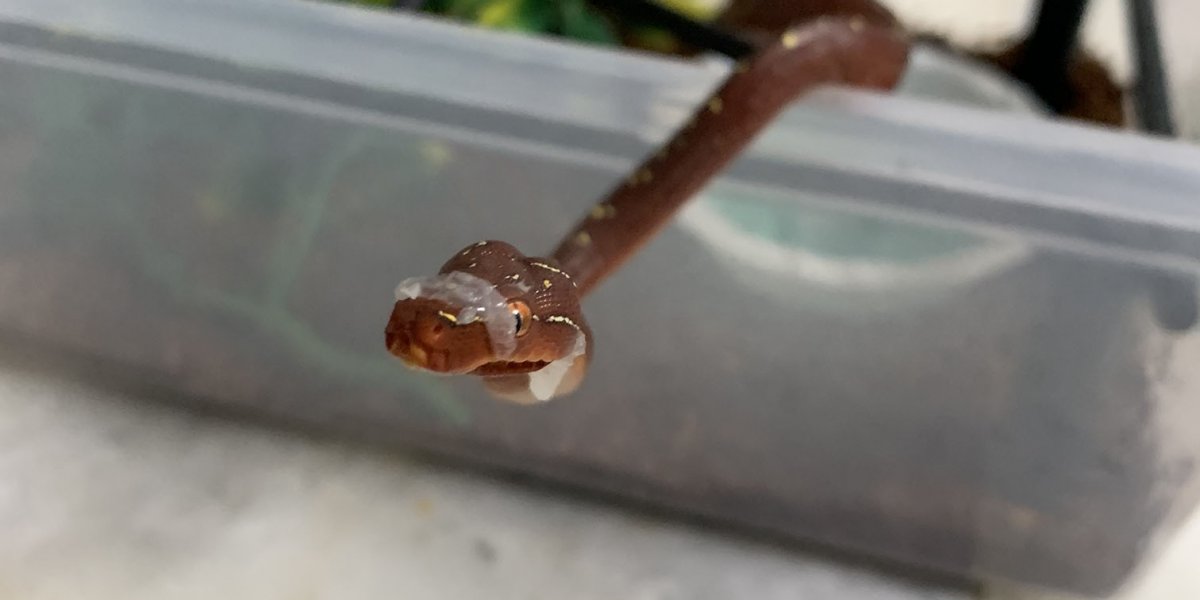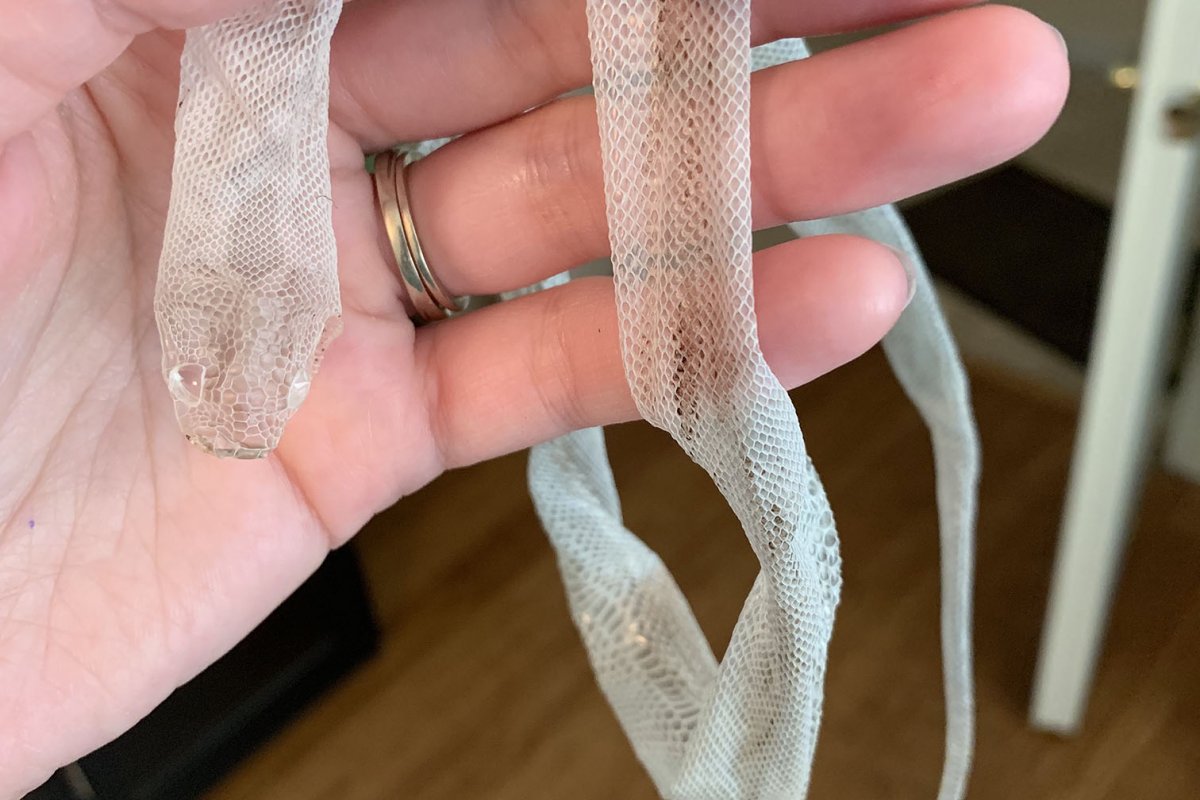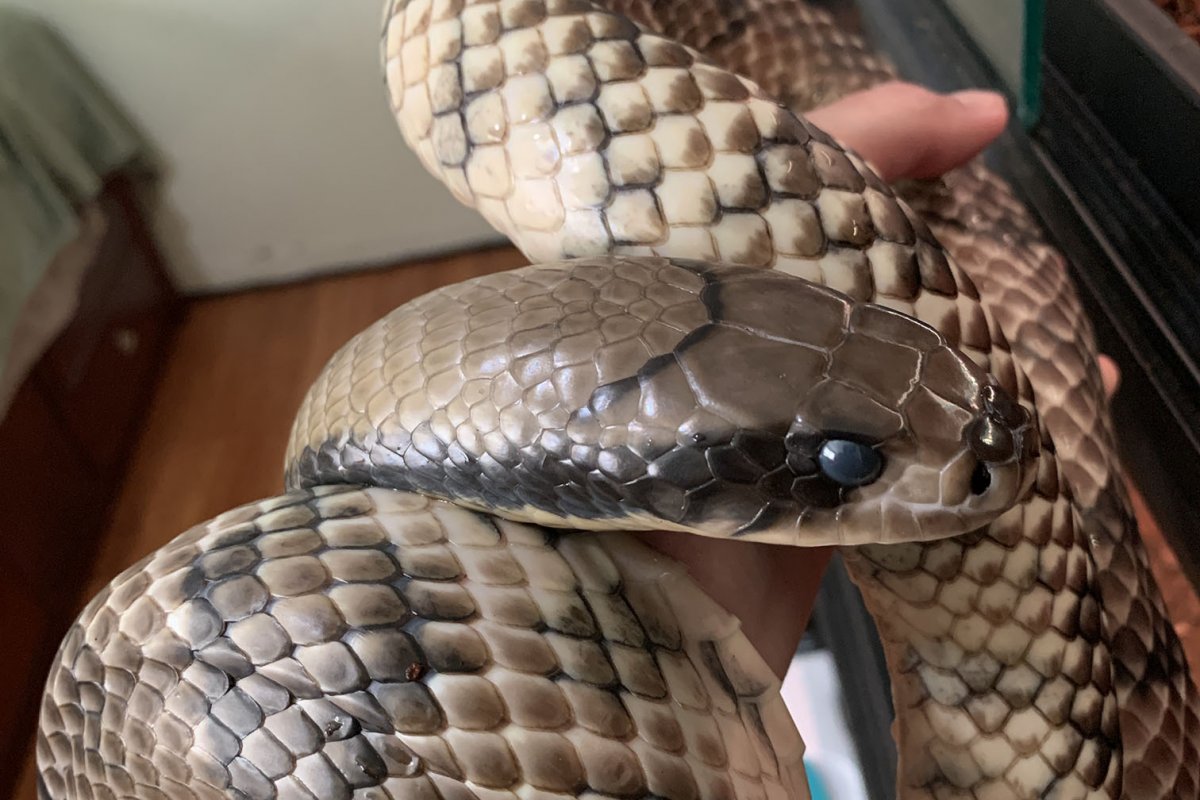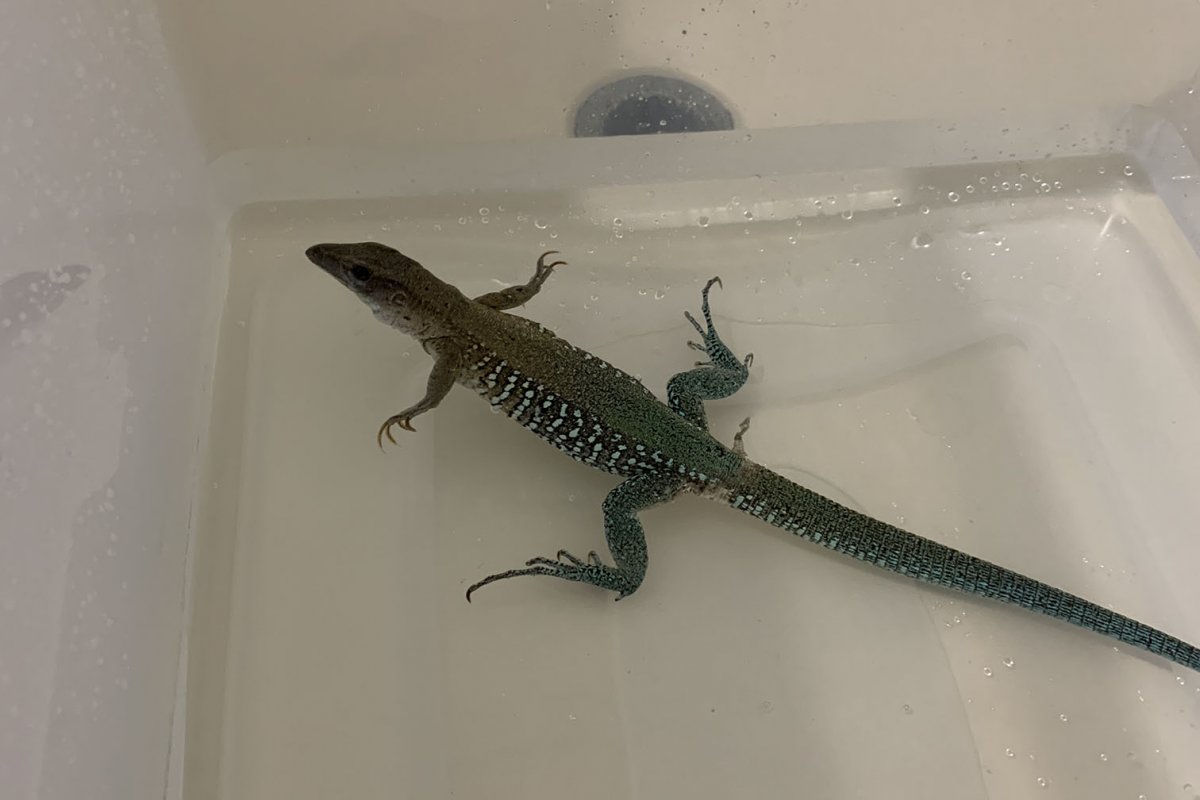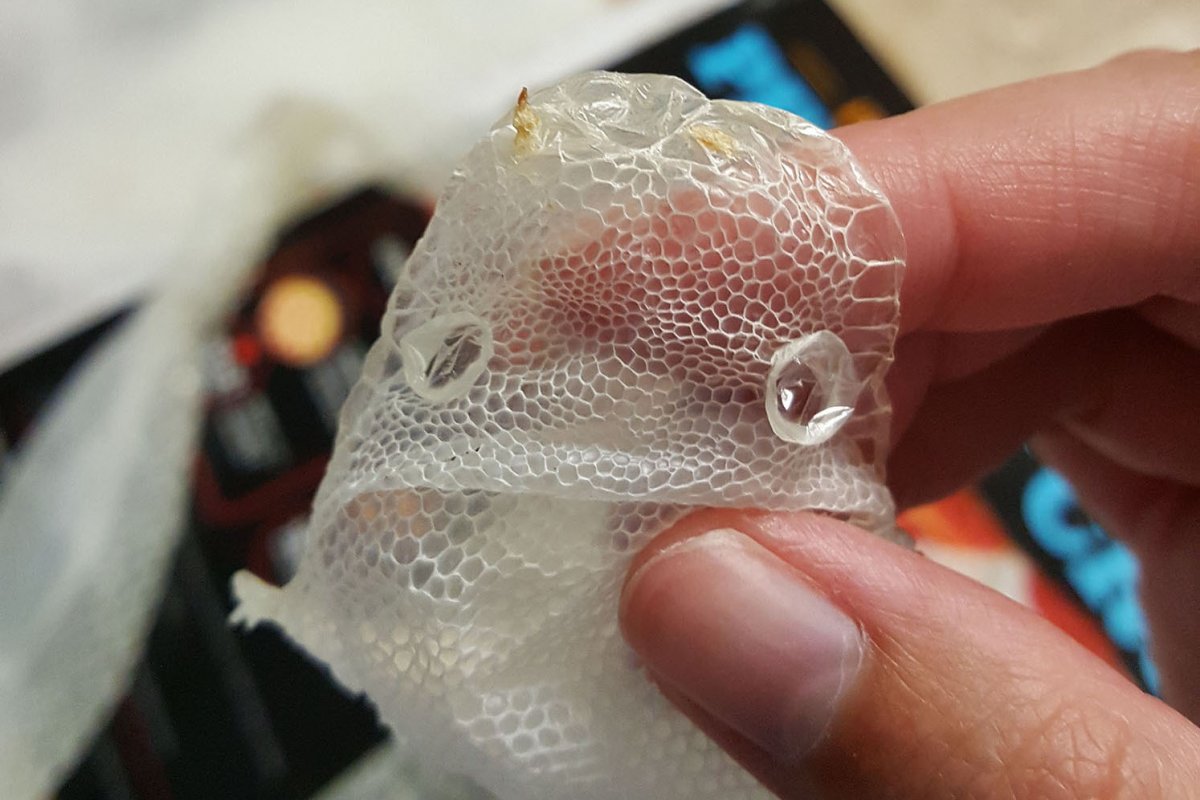As reptiles grow, they shed their skin to accommodate their new, larger size. They also shed to replace older skin and heal injuries.
Snakes and Lizards: Similarities and Differences
Snakes and lizards shed differently. Lizards generally shed in pieces or patches (some lizards shed in one piece, depending on species). The shed generally progress from nose to tail, over a period of days or weeks. Snakes, however, spend anywhere from 5-14 days “in shed”. Then, they shed in one solid piece, all at one time. It begins at the nose and “unrolls” until the shed is completely removed.
In many ways, shedding is very similar for snakes and lizards. During shed, a reptile may appear to be more dull in color. In snakes, the skin may appear white, hazy or translucent, and the eyes may become milky.
Reptiles may be cranky or agitated around the time they are in shed. They may not want to be touched, may hide more than usual, and may refuse food. For snakes specifically, the milky clouding of their eyes makes it difficult, if not impossible, for them to see. (It must be pretty scary if you can’t see and someone suddenly grabs you!)
Moisture is a critical component of shedding for reptiles, because humidity makes it easier to separate the old skin from the new one. In general, you’ll want your reptile’s humidity to be higher than normal during this time, but still within its safe range. Soaking in lukewarm water (81-86F) may be helpful during this time, but it will depend on the reptile. Disturbing them to soak may be unnecessary if they are stressed out and proper conditions can be maintained in their enclosure. And, it is important to remember that even in shed, soaking too often can cause its own set of health problems.
Some snakes, like cornsnakes, do not have high humidity requirements and may be fine with a misting of the enclosure or providing a humid hide. Others, like ball pythons, will benefit from a spray-and-turn of their substrate every few days while they are in shed, and misting daily. It is important to make sure the substrate is moist, not dripping wet.
If this is not enough, we may soak in lukewarm water (again, no more than 86F) every 2 days or so, for about 20-30 minutes. We have done this for our false water cobra (who generally enjoys water anyway) and a couple of our ball pythons if they tend to have trouble shedding, or if humidity in the house has been particularly low. Sometimes a soak can just help to get a snake started, and then they can shed just fine on their own.
For our monitor lizard and ameiva lizard, we will soak every 2-3 days during a shed cycle to help with shedding. We may use warmer temperatures (closer to 87F) for basking lizards. This can be done during and after shed to assist with removal of all old skin.
It is important to make the distinction between snakes and lizards when it comes to shed complications. If a lizard takes a few days to shed, this is normal. It is just important that all of the shed does come off, as stuck areas can constrict blood flow to healthy tissue. Stuck shed on a lizard’s tail or toes over a period of time can result in the loss of that part.
Similarly, chronically stuck sheds on the snake's tail can result in tail loss. Chronically stuck eyecaps--or eyecaps that are not removed safely--can result in blindness to snakes. This may also be true of lizards, since some geckos have eyecaps.
In snakes, the shedding of one’s skin in one piece is very important. It may rip or tear as they shed on ornaments (this is OK!) but you should not see patches of skin sticking fast to your snake and tiny shredded bits of skin confetti all over the enclosure. This is generally a sign that husbandry is incorrect, and humidity was not high enough. If husbandry is correct, it may be a sign of an underlying health problem.

